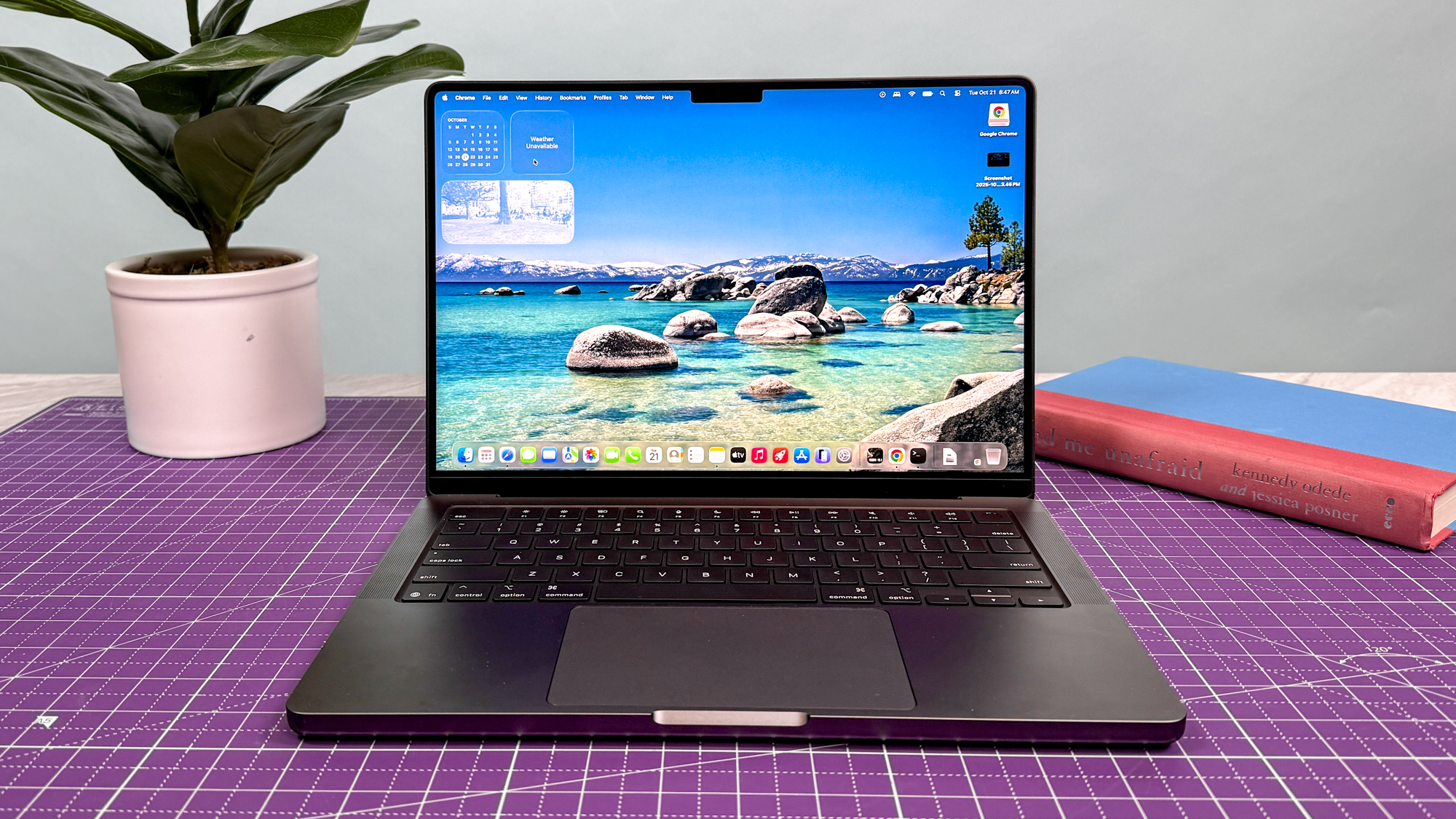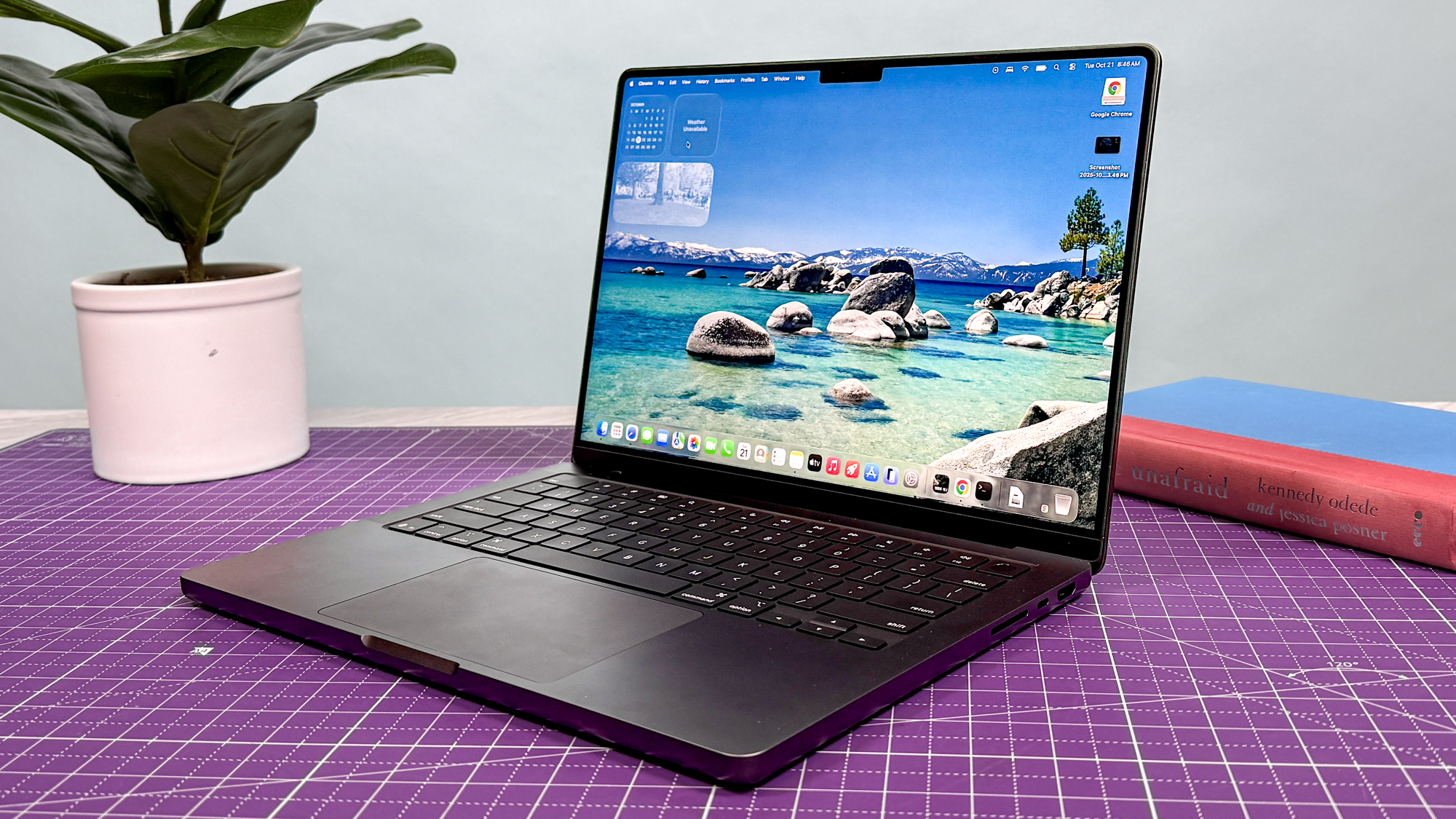Does the M5 MacBook Pro prove Apple is ready for serious gaming? I put it to the test
Here's how Apple's latest Pro MacBook handles gaming

The new MacBook Pro M5 is another stellar Apple laptop that raises the bar for performance and battery life, as our M5 benchmark tests show. There’s no denying the system’s powerful performance, but how does it fare when it comes to gaming?
As always, we benchmarked a handful of games on the MacBook Pro M5. I also conducted my own hands-on testing that better represents the average person’s experience gaming on a MacBook. Through these methods, I've gained a solid understanding of where Mac gaming stands as of late 2025. In short, it’s better than ever, but there's still work to be done.
While you’ll have an easier time playing the best PC games on a Windows 11 machine, you won’t be completely dissatisfied playing some of your favorites on a machine like the MacBook Pro M5. Does the M5 MacBook Pro prove Apple is ready for serious gaming? Let’s find out!
MacBook Pro M5 gaming benchmarks

Let’s start with our lab tests, where we run several titles through their respective built-in benchmark tool with the game’s graphical setting set to Ultra (or equivalent).
Resolution-wise, we set the tested machines at their respective maximum resolution, which is 1964p for the MacBook and 1600p for the others. The latter are equipped with Nvidia’s RTX 50-series GPUs.
| Row 0 - Cell 0 | Assassin’s Creed: Shadows | Cyberpunk 2077 | Shadow of the Tomb Raider |
MacBook Pro M5 | 9 fps | 5 fps | 28 fps |
Alienware 16 Aurora (RTX 5070) | 27 fps | 12 fps | 75 fps |
Lenovo Legion Pro 7i (RTX 5080) | 37 fps | 30 fps | 101 fps |
Alienware 18 Area-51 (RTX 5090) | 52 fps | 45 fps | 150 fps |
As you can see above, the MacBook Pro M5 didn’t fare well against some of the latest RTX 50-series gaming laptops like the Lenovo Legion Pro 7i and Alienware 18 Area-51. Several factors are no doubt impacting performance, such as the resolution we benchmarked games on and a machine’s respective cooling solution and thermal throttling.
It’s not a (no pun intended) apples-to-apples comparison, but it gives you a good idea of what to expect from the MacBook Pro M5 if you play at maximum graphical settings and resolution. That said, things are much better if you play at more modest settings.
Get instant access to breaking news, the hottest reviews, great deals and helpful tips.
On the “For this Mac” graphical setting in Cyberpunk 2077, which enables MetalFX (Apple’s answer to Nvidia DLSS frame-boosting tech), the game runs much better.
| Row 0 - Cell 0 | Cyberpunk 2077 |
1920 x 1200 | 43 |
1800 x 1125 | 47 |
3024 x 1964 | 31 |
When I tested Resident Evil 4 Remake on the MacBook Pro M5, it ran at 50 to 55 fps at 1080p resolution with MetalFX disabled. With MetalFX, the frame rate was boosted by double, hovering between 100 to 120 frames per second.
Like with Nvidia DLSS 4 on RTX 50-series machines, MetalFX is the secret sauce to increase a game’s performance. However, this feature is only for a handful of Apple silicon-optimized games, so keep that in mind.
Bottom line
Thanks to its M5 chip, the MacBook Pro has the potential to be a fantastic gaming laptop. I say potential, because you get the best results with games optimized for Apple Silicon. There aren’t too many of those at the moment, but the library grows each year.
And that’s ultimately what’s keeping Mac gaming from gaining more ground. The hardware is there, but many of the gaming industry’s major “AAA” game developers simply aren’t bringing their games to Mac. This is also true for several peripheral manufacturers who don’t have dedicated software for Apple’s platform.
We’re likely still many years away from seeing Mac gaming give PC gaming true competition. That said, we’re seeing bigger and bigger games arriving for Macs every year. This gives me hope that Macs could one day be viable platforms for dedicated gamers. The future looks bright indeed!
Follow Tom's Guide on Google News and add us as a preferred source to get our up-to-date news, analysis, and reviews in your feeds. Make sure to click the Follow button!
More from Tom's Guide
- I tested the iPad Pro and the MacBook Pro
- iPad Pro M5 review: The most powerful tablet ever
- Which MacBook should you buy in 2025?

Tony is a computing writer at Tom’s Guide covering laptops, tablets, Windows, and iOS. During his off-hours, Tony enjoys reading comic books, playing video games, reading speculative fiction novels, and spending too much time on X/Twitter. His non-nerdy pursuits involve attending Hard Rock/Heavy Metal concerts and going to NYC bars with friends and colleagues. His work has appeared in publications such as Laptop Mag, PC Mag, and various independent gaming sites.
You must confirm your public display name before commenting
Please logout and then login again, you will then be prompted to enter your display name.
